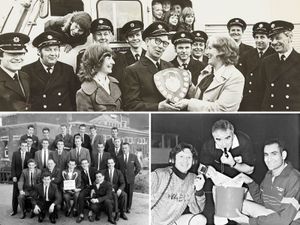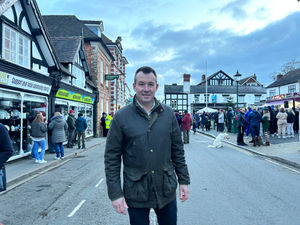Abraham's big idea
Three centuries ago Abraham Darby did something which changed the world forever.
Three centuries ago Abraham Darby did something which changed the world forever.
Nobody knows what he looked like. Nobody knows much about what he was like as a person. But, 300 years ago, Abraham Darby did something which changed the world forever.
And no, we're not talking about making the Ironbridge Gorge a major tourist destination – although that was one consequence of his innovation.
He was the man who effectively kickstarted the Industrial Revolution, which is why Coalbrookdale lays claim to be its birthplace.
Throughout this year there have been events under the "Coalbrookdale 300" banner to celebrate his achievement, including a weekend festival at Coalbrookdale.
But what did he do that was so special?
 Paul Belford, head of archaeology and monuments at Ironbridge Gorge Museum Trust, explains. Darby, a Quaker, came to Coalbrookdale from Bristol, where he had his own brass foundry, in 1708. He brought with him a big idea – a patent for casting iron in sand moulds.
Paul Belford, head of archaeology and monuments at Ironbridge Gorge Museum Trust, explains. Darby, a Quaker, came to Coalbrookdale from Bristol, where he had his own brass foundry, in 1708. He brought with him a big idea – a patent for casting iron in sand moulds.
"He came to Coalbrookdale, where there was already a blast furnace, for a number of reasons, partly because it was isolated and also because it was still well connected by the River Severn to Bristol and his other trading destinations.
"Also it had a history of using coke, a mineral fuel, rather than charcoal to smelt the iron. One or two had experimented, but none had done it successfully.
"The holy grail of ironmaking was to try and find a way of breaking the reliance the ironmaking industry had on using charcoal. All the blast furnaces used charcoal."
Using charcoal limited production, as it could not easily be transported, and so the industry was effectively tied to wooded areas.
The fuel needed to be free of potential contaminants, as it came into direct contact with the iron during the process. Finding a way to use coal would lift the limits on production. And Shropshire coal, Darby knew, was particularly suited for coking as it is low in sulphur.
"Darby, having heard about the previous experiments, probably decided that Coalbrookdale was the place he would try to perfect his sand-casting technique using coke-smelted iron. And that's what he did. Using local coal turned into coke, in 1709 he produced this iron that was able to work in his new sand-casting technique and could be smelted with coke."
This yielded immediate commercial advantages, but also had a longer-term impact.
"The beauty of it was that he could make castings that were just as strong as previously, but could be thinner, so he was able to make many more cooking pots for the same weight of iron.
"In the next 10 to 20 years Newcomen invented his steam engine.
"All the parts were cast in Coalbrookdale because he could do the precision castings for cylinders. So Darby's coke-smelted iron enabled the development of the steam engine."
There were still some problems, in particular in that forges were still working iron using charcoal, but as the 18th century unfolded these were overcome and England was the world leader in the production of iron, the core material of the Industrial Revolution.
"There was a dramatic increase in the level of industrialisation in the early 18th century but talk of the Industrial Revolution is misleading in a way because it was a gradually accelerating process which started in the 16th century and reached a critical mass which was built on the previous 100 years of steady development.
"It's important to emphasise that these early developments were important, substantial, and paved the way for what happened in the 18th century."
As for Abraham Darby himself, who was the first in a dynasty of three famous Abraham Darbys (it was Abraham Darby III who built the Iron Bridge), we do not know what he looked like as, being a Quaker, portraits were seen as vanity.
Mr Belford says it is also difficult to filter out what sort of person he was from the documentary records, but says: "He was a conscientious, hard working and very honest man.
"He lived in lots of different places. For a while he lived at Madeley Court, which came with the Coalbrookdale iron works. Most of the time he was living at the White House, at the Upper Forge in the middle of Coalbrookdale. It was knocked down in the 1930s.
"He was having a house built for him at Coalbrookdale, Dale House, but he died before it was completed."
By Toby Neal





